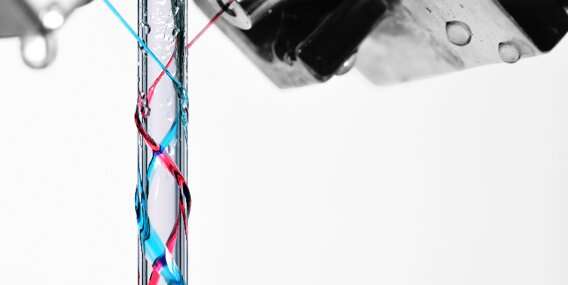Why we always spill tea

Who has never spilled water, tea or wine while pouring it? Pouring liquids is difficult because they tend to cling to the bottle or the teapot spout rather than flowing directly into your cup or glass. A team of scientists from the University of Amsterdam, University of Twente and Saxion University of Applied Sciences put a new spin on this annoying 'teapot effect' by using it to form liquid helices. Their results were published in Physical Review Letters this week.
Despite its ubiquity, understanding the teapot effect has proven particularly difficult. Almost three centuries after the first study, it is nowadays accepted that the adhesion between the liquid and the solid comes from the combination of wetting and the presence of a depression in the fast turning liquid – similar to the one above airplane wings that allows the plane to fly. However, no theory has been able to capture exactly when the clinging occurs.
Helix-shaped swirls
By shooting jets of water onto vertical cylinders, the researchers observed that the liquid can cling to the cylinder, just like it clings to your teapot. Because of the clinging effect, the water swirls around the cylinder to form a helix. By modeling the helix shape and how it is formed, the team was then able to predict the exact clinging behaviour for the first time.
Because this type of clinging occurs every time a liquid stream must detach from a solid, the result can not only be used to make teapots that don't spill as much – it will also be useful for many industrial processes, ranging from pouring to 3-D printing.
More information: E. Jambon-Puillet et al. Liquid Helix: How Capillary Jets Adhere to Vertical Cylinders, Physical Review Letters (2019). DOI: 10.1103/PhysRevLett.122.184501
Journal information: Physical Review Letters
Provided by University of Amsterdam





















